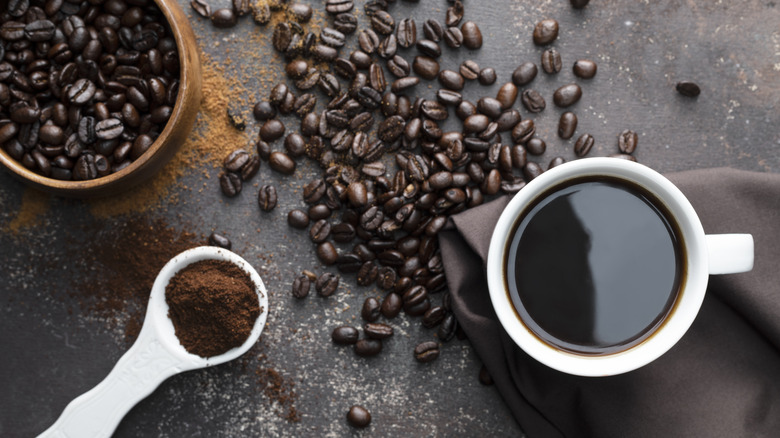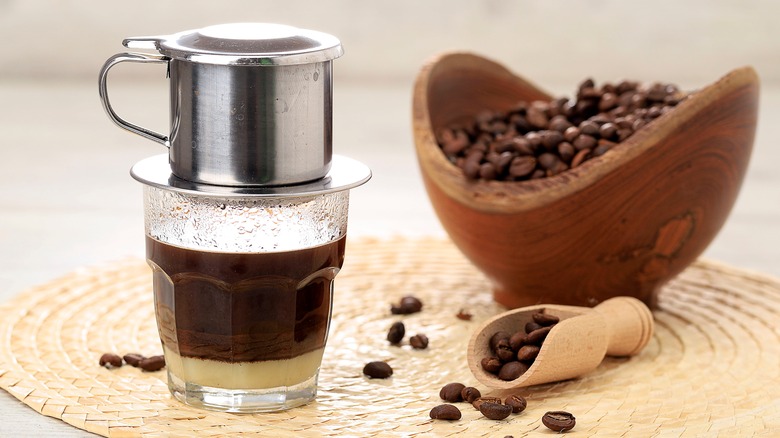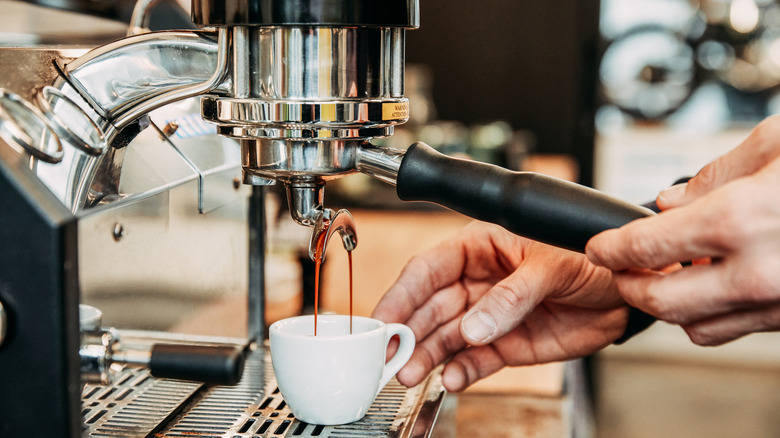Robusta Vs Arabica: Which Coffee Delivers The Biggest Caffeine Kick?
Whether you are after maximum buzz or prefer a more mellow cup of joe, knowing which type of beans your brew was made from can help you make a decision. The designations robusta or arabica refer to two of the most prevalent species of coffee trees — though there are many others. Coffee brewed from the beans of both trees will definitely give you a boost, but robusta beans have around twice as much caffeine as arabica.
Both are widely available, but arabica tends to be more popular and is generally considered to be more desirable in Western markets. Robusta is often used in pre-ground products or blends with milder beans. Brewed and dehydrated robusta coffee is typically what instant coffee is actually made of.
Arabica is known for being smooth, fruity, acidic, sweet, and floral, which sounds lovely, of course. But, if you decide to buy robusta beans, you may read or hear some less-than-flattering descriptions of a harsh, burnt, bitter, or rubbery taste. While robusta is undeniably more full-bodied than arabica, these unpleasant flavors are more so a result of quality rather than shortcomings in the bean itself. A good quality robusta brew has a dark and rich flavor with notes of grains, nuts, or chocolate. For a much lighter cup of robusta with the same underlying notes, white coffee is the perfect variety for a sweeter-tasting brew.
Embracing robusta coffee beans
Robusta trees flourish at lower and warmer elevations, have strong disease resistance, and produce a higher yield. As such, these are much cheaper to produce than arabica beans, whose pest-susceptible trees require a high elevation and significant maintenance. Cheaper beans are the obvious choice for lower-quality products, and this association has definitely maligned robusta's image to the point that some supposed aficionados write it off completely — including companies like Starbucks.
But, if you have ever had the pleasure of sipping on a proper Vietnamese coffee made from a pour-over contraption called a phin, you could probably tell that it was more than just the hefty portion of sweetened condensed milk that made it so delicious. There is a certain elegant bitterness that provides incredible depth and balance — similar to biting into a piece of dark chocolate.
That is what robusta brings to the table, along with a significant buzz. Tammy Huynh of Omni Bev, Sahra Nguyen of Nguyen Coffee Company, and Lan Ho of Fat Miilk are some of the many figures actively fighting the bias against robusta beans in the coffee industry. If you are after the biggest caffeine punch, rest assured that the flavor of a quality robusta will not disappoint.
What other factors influence the caffeine content of a cup of coffee?
Opting for robusta coffee means you will get 18-20 milligrams of caffeine per gram of coffee as opposed to arabica's 8-12 milligrams per gram. But the type of bean is not the only consideration to make. Whether you need the jolt or are trying to keep the jitters to a minimum, you should also look at the brewing method, the size of the grind, the portion of coffee used, and the temperature of the water.
All these factors play off of each other. In general, a fine grind, large amount of ground coffee, and brewing method where the grounds come in contact with water for a long period of time will produce a final cup with a high amount of caffeine. For extended exposure to water, cold brew is one of the most caffeinated ways to drink coffee — despite the typical coarse grind and cool temperature. These factors are also a good reason for cold brew's higher price tag. Espresso — due to the pressurized extraction, hot water, and fine grind — is even more highly caffeinated. While an espresso machine produces the most highly caffeinated coffee, the strong flavor makes it more well-suited for sipping in a shot form. This is why typical serving sizes are also important to consider.



